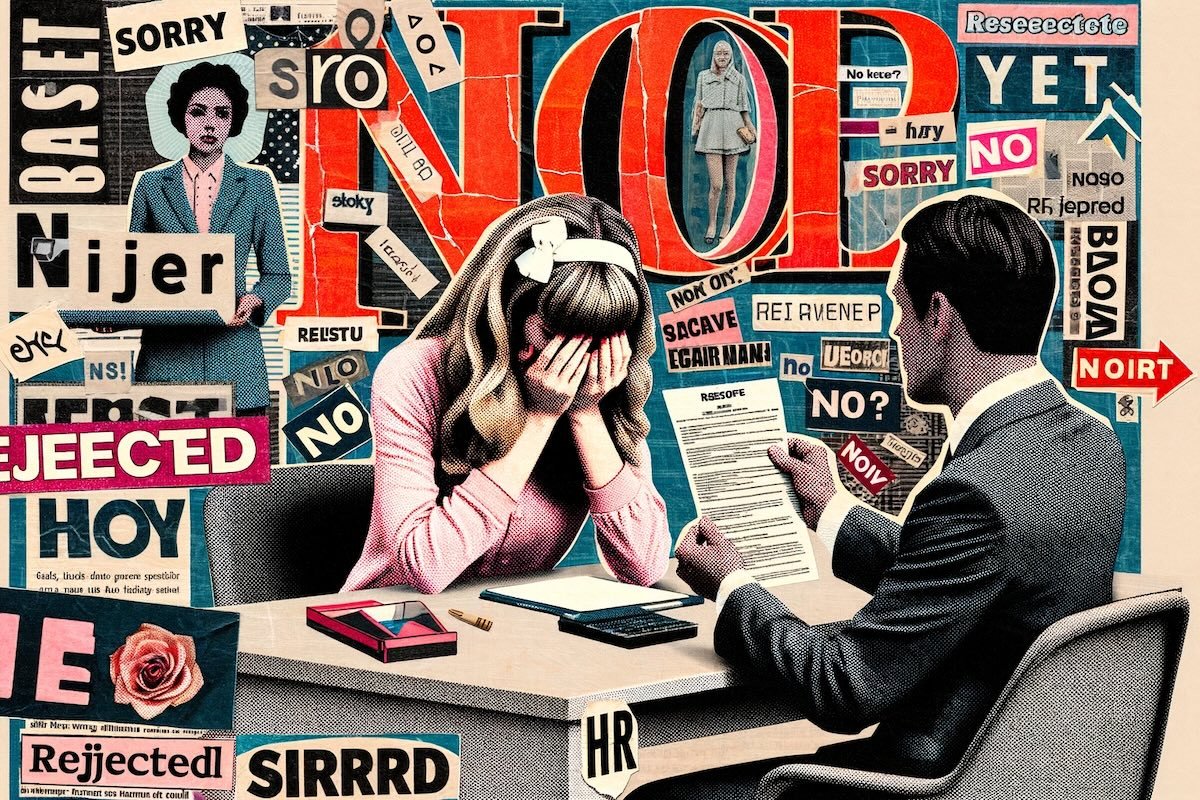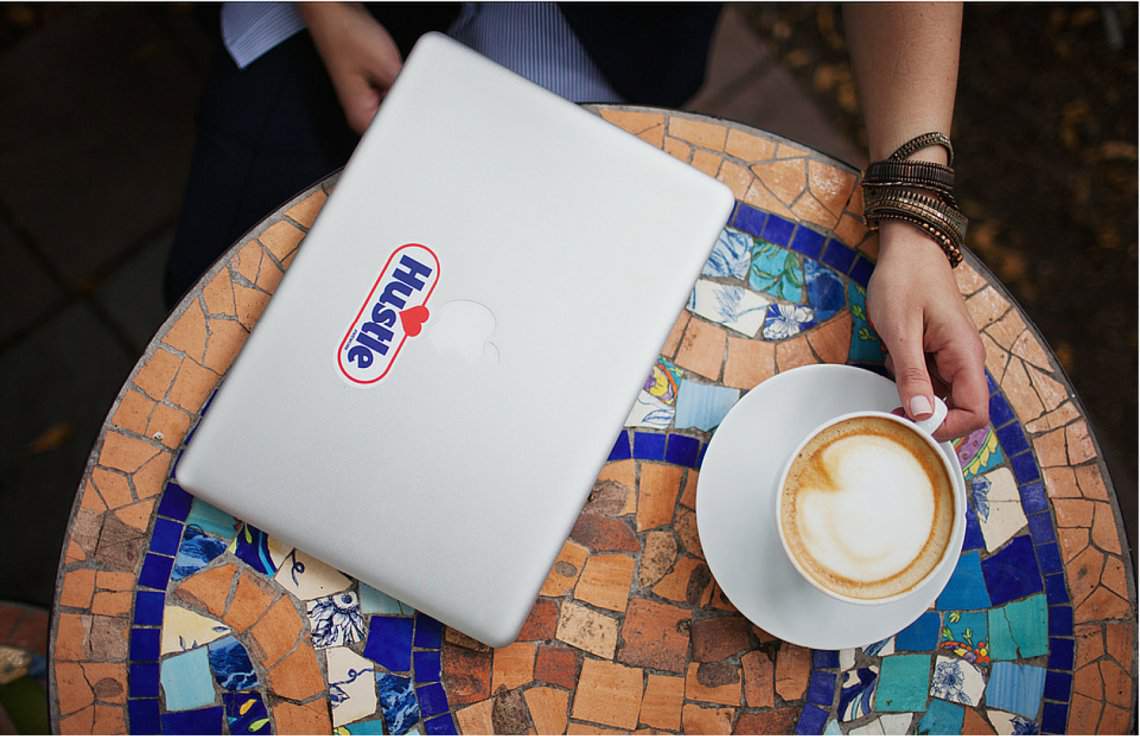You've done the hard part, and your resume is ready to send. But when you click Save As, have you ever wondered what the best file name is?
We see that look you're giving us, but it actually is essential.
We asked some of the coaches from our Hire a Mentor platform for their best recommendations. While naming conventions vary, there was a clear pattern: time and time again (especially from the recruiters), we heard the same complaint. Having to spend time resaving resumes in the right format? It's obnoxious.
So, here's the deal. Your resume is beautiful, up-to-date, and downright impressive. Your cover letter is an impressive tale of career success! The last thing you want popping in your inbox is an email from a recruiter saying, "I can't open this file."
To be quite frank, you'd be lucky if the recruiter had the time to email you in the first place. The name of the game here is making things as easy as possible for a recruiter or a hiring manager.
To avoid being placed in the "NO" pile due to an incompatible file or a confusing file name, here are our best tips to send your resume, cover letter, and any other hiring documents over—so that anybody can open your gorgeous resume.
Table of Contents
How to Save Your Resume or Cover Letter
While you can't guarantee exactly what format your dream company uses when saving resumes in their files, one thing's for sure: resume.doc or myresume.docx is not the way to go.
Sure, finding your resume saved on your computer is going to be easy. However, consider you're a recruiter receiving hundreds of resumes every week. It'd be like saving a photo on your computer as photo.jpg. It doesn't work.
Here are some instructions for saving your resume or cover letter.
1. Keep the File Format Consistent Across Items—and Always Save as a Pdf
PDFs are pretty universal. It's actually even in the name. PDF stands for portable document format. Portable: meaning it works on pretty much every operating system, mobile device, and tablet. This guarantees that
any pretty fonts or formats you've used will look the same to your reader as they do to you.
We love the PDF. We live for the PDF. Always save as a PDF—unless you're instructed otherwise.
2. Include (at Least) Your Last Name in the Document Name
Actually, we recommend you include your first name as well. This is especially true if you have a pretty common surname. Recruiters could have multiple job applications under the same name. Additionally, we recommend that you separate each word with a dash to make it easy to read.
- Firstname-Lastname-Resume.pdf (i.e., Jane-Doe-Resume.pdf)
- Firstname-Lastname-Cover-Letter.pdf (i.e., Jane-Doe-Cover-Letter.pdf)
- Firstname-Lastname-References.pdf (i.e., Jane-Doe-References.pdf)
3. Consider Including the Job Title as Well
If you never considered the file name to be that important when
applying for a job, you might be laughing at this advice. However, you want your resume, cover letter, and other hiring documents to be as searchable as humanly possible.
Put yourself back in a hiring manager or recruiter's shoes. They are likely hiring for a variety of roles. In this case, we'd recommend throwing the job title in your file name, as well.
- Firstname-Lastname-Resume-Role.pdf (i.e. Jane-Doe-Resume-Technical-Assistant.pdf)
- Firstname-Lastname-Cover-Letter-Role.pdf (i.e. Jane-Doe-Cover-Letter-Technical-Assistant.pdf)
- Firstname-Lastname-References-Role.pdf (i.e. Jane-Doe-References-Technical-Assistant.pdf)
That's kind of it, but sometimes it's the simple things that make all the difference. By keeping your formatting consistent, you accomplish a couple of key things.
You start drumming your name into the recruiter or interviewer's brain long before they've contacted you for an interview (some people say it takes seeing your name six times for someone to remember it, like learning a new word. Consider your resume file and cover letter #1 and #2). And by including your name and the job role on your files, you save the receiver the added step of re-saving your resume. They'll appreciate it.
How to Email a Resume to an Employer
Now that you have a beautiful resume (and saved and titled correctly), it's time to send it to a potential employer. Some people may hit a wall at this point: What should I write in
the body of the email? What kinds of
greetings are the best to use? Should I include my contact details again?
Let's go over some tips for ensuring that your submission is received in the most professional manner.
1. Follow the Directions Listed in the Job Description
Most companies have a preference on how they would like to receive resumes, cover letters, and job applications. There's a good chance that the job posting will include instructions on how to submit. Carefully read (and re-read) the job posting. Follow the instructions outlined by the employer.
Many hiring managers who receive a high volume of resumes may automatically eliminate job applicants who do not submit correctly. By following the directions listed in the job description, you are not only ensuring that your resume is seen, but you are also showing your keen
attention to detail.
2. Send from a Professional Email Address
This tip is straightforward but crucial. Triple check that the email address you are sending your email from is an
acceptable professional email. Nothing is worse than sending your resume and realizing that you've sent it from "SarahsJunkMailBurnerAccount@hotmail.com."
Make sure that the email you use is an email that you check regularly and will always be accessible. For example, if you are graduating or have recently graduated, it's probably not a good idea to send an email from your .edu account in case you lose access.
Likewise, it's probably not the best idea to send a job application and resume from your current work email. This is not a good look for your current employer and you also may lose access to that email at some point.
3. Use a Clear Subject Line
When it comes to
writing a subject line, the clearer, the better. We recommend a combination of your name and the job title for which you are applying. Here are some suggestions:
- FirstName LastName Resume
- FirstName LastName Cover Letter
- FirstName LastName JobTitle
- JobTitle - FirstName LastName
Also, referring back to our first tip, the job posting may specify what subject line to use. Always defer to that subject line.
4. Keep It Simple
As we've mentioned before, the recruiter or hiring manager probably has a flood of resumes and job applications in their inbox. In order to make it easier on the recipient of your resume, keep your email simple. The text in the email body should be short and sweet. All of your work experience will be detailed in your attached resume and cover letter.
In terms of formatting, stick with default fonts. No need to change font colors, include emojis, or incorporate any flashy signatures. Anything that will slow the load time of your email is a no-go.
5. Include a Signature with Contact Information
Speaking of signatures, make sure you have an updated professional signature that includes up-to-date contact information. We recommend including your phone number, pronouns, website, a link to your LinkedIn profile, or any other
professional social media handles if they are relevant.
6. Always Proofread + Make Sure You Attached Your Resume
One of the most important things you can do before hitting the send button is to proofread your email for any typos or grammar mistakes. An email riddled with typos doesn't give a potential employer a great first impression.
On that note, ensure you have correctly spelled the hiring manager's name or are directing your email to the correct person. After you've read over your email, double-check to ensure you have all the correct attachments.
7. Pro Tip: Send a Test Email Message
If you're still a bit nervous to send the email, we recommend sending a test email. Try sending your resume to a friend to make sure it isn't hitting their spam email. Your friend can also serve as a second proofreader.
Sample Email to Send to an Employer
Just in case you needed a bit of extra guidance on writing your resume email, we've created a short template to help you.
Here's a sample email:
Subject line: [FIRSTNAME] [LASTNAME] - [JOB TITLE]
Dear [NAME],
I am writing to express my interest in the open [JOB TITLE] position.
Attached, please find my resume and cover letter. If you have any questions or need any additional information, please feel free to reach out.
Thank you for your consideration.
Best,
[FIRSTNAME] [LASTNAME]
[PHONE] | [WEBSITE] | [LINKEDIN PROFILE]
[LIST GRAPHIC]











